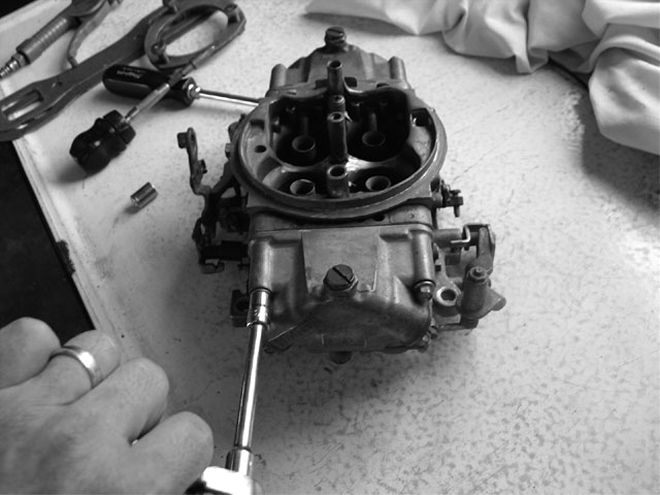

If there's one thing we love here at Mopar Muscle, it's a deal. It is the reason we scrounge through scrap yards and spend countless hours at swap meets rifling through someone else's overpriced junk to find a great deal. So when we needed a carburetor for an upcoming project (and after checking our bank statement and the price of a new carburetor), we quickly realized we should focus our attention on the "pre-owned" market and headed to the local swap meet for a Holley to rebuild.
When shopping swap meets and junkyards, keep in mind that for every diamond in the rough, you'll have to look at countless gems of unserviceable, overpriced used parts. We are always cautious when making these purchases because we have been burned in the past by buying someone else's problem. We tend to look for parts that are in rebuildable condition and have not been highly modified. We also begin our negotiations by offering a ridiculously low price. Hey, the worst a seller can do is laugh and say no. When looking at a used carburetor we always look at the overall condition, and then check the base for broken ears, bent linkage, and worn throttle shafts; the body for stripped float bowl to body threads; the bowls for stripped needle and seat threads. Well, it must have been our lucky day because after only an hour of looking we found what we wanted-a Holley 850 double-pumper in decent shape, and for less than 100 bucks! We quickly made our purchase and went home before we blew our rebuild kit funds on a set of glow-in-the-dark plug wires or something equally as useless.
The Holley 850 double-pumper has been a mainstay of high-performance fuel delivery for years. The Holley performs well, is easy to tune, and is durable. The only downfall to our purchase was the choke horn had been removed to improve airflow for a drag racing application. No big deal because we live in Florida, and if we ever needed a choke to start our car, hell has probably frozen over and we'd have other things to worry about! The benefit of a carburetor that has been drag raced is that while it may be old, the main parts are usually not worn out. As an example, if a car goes ten rounds at a quarter-mile track every weekend for ten years, it still only has the equivalent of 2,600 miles of use, which is well below the designed life of the carburetor.
Upon returning home with our carburetor, we called our friends at Holley Performance Products and ordered our rebuild kit. We were fortunate that whoever removed the choke horn on our carburetor (where the identification numbers are usually stamped) had engraved the numbers on the side of the body so we could use them for purposes of ordering. We chose the Holley Trick Kit since it offers items for additional tuning, such as accelerator pump cams and nozzles that are not found in the standard kit. We also ordered a pro series adjustable secondary throttle linkage kit, as well as a secondary idle adjustment lever (in case we choose to upgrade to four corner idle in the future), and a jet extension kit with a matching float. A jet kit is also needed to properly tune the carburetor once it's built, so if you don't have one, now is the time to order it. The Holley tech line was very helpful, and we had our parts on the way in short order.
When our Trick Kit and other parts arrived, we began our rebuild. Holley carburetors are designed for ease of maintenance and tuning, thereby making them easy to work on with basic hand tools. Our Holley is a double-pumper (two accelerator pumps), but other Holley two- and four-barrels have only minor differences. By following our instructions and the manual provided with your kit, you should be able to perform the basic rebuild without trouble. When rebuilding a two-barrel version you only have half the parts, so, in theory, the task should take half as long.